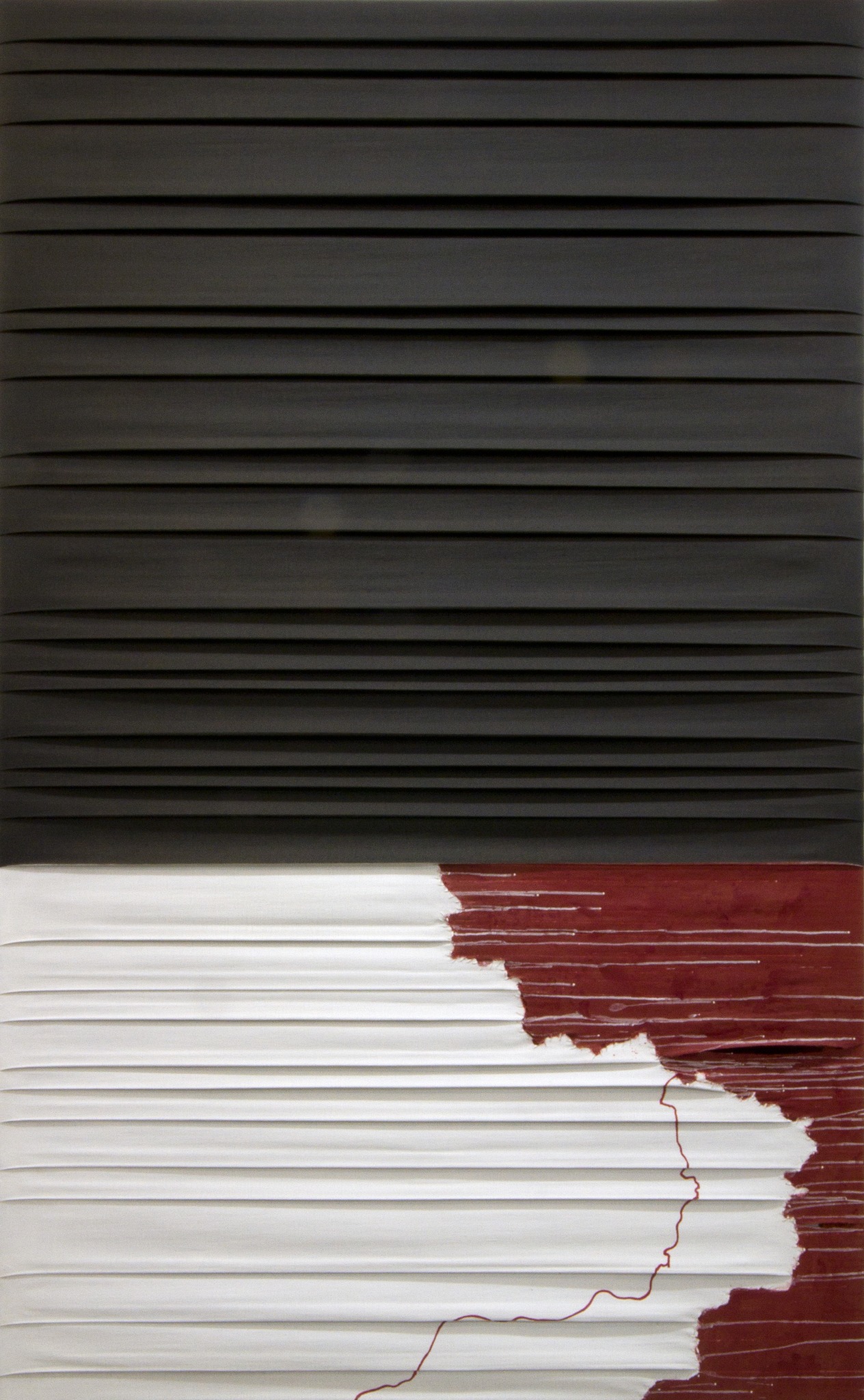Breadcrumb
“Where Is Your Red Line?” by Edgar Tedresaar
On Thursday, August 10th, 2023 at 18.00 Edgar Tedresaar will open his exhibition Where Is Your Red Line? in Draakon gallery. The exhibition will be open until September 2nd, 2023.
Red lines can be stable, axiomatic and discreet. Yet they can also be unstable and larger than life. The latter have suddenly appeared in our lives. These are thick lines, effervescent and unnerving.
In the field of security, red lines mark an area within which someone wants to be sovereign, or perhaps even dominate another. Such actors are rational and have agency. Their areas of activity inevitably overlap, albeit partially.
There would be no need for red lines, if there were no other actors in our vicinity. The overlap of ambits is an aspect of our social life — our actions will extend to and across other people’s boundaries. For example, we know how painful it is to see something dear break in our hands, but even more so if it happens to break in someone else’s hands. Even if the thing is imagined, it is a part of us.
In other words, one’s actions will, directly or indirectly, affect their interests and activities, their personal sphere. If someone crosses another’s red lines, they must accept that there will be a reaction, possibly even a counter-action.
A world of larger-than-life red lines is a traumatised world where someone is directing aggression at us. In such a world, we are vulnerable. Every move can be interpreted as an existential threat. It is a struggle. Other, inner red lines emerge from behind the outer lines. In time, when someone tramples over this certain inner threshold, you break. These are lines which should not be crossed as that would exhaust your will and resources. This inner red line represents a breaking point, a moment of surrender.
In the world of red lines, everyone is engaged in a struggle for survival, fighting for their lives or interests. Self-expression is a show of power. Rules are scarce or do not apply.
It is a world of suspicion and anxiety. A world where force reigns.
One can imagine a different world where interactions are based on rules rather than force. The red lines would encompass a modest area of personal and private affairs. The rules would enforce stable and mutually recognized red lines. In such a world, there would be no real fear that someone will put too much pressure on you, set you up, dominate you. And you would not have to assert yourself by force. The basis of communication would be the rules which are not the result of an ever-fluctuating compromise, but an expression of consensus and co-operation. Rules represent the possibility of interacting with another actor as an equal. In the world of modest red lines, the contact area of actors is broad and deep, and there is no threat in self-expression. In such a world, communication is playful and cannot be reduced to force.
Rules exist in the world of larger-than-life red lines, but they treated as signs of a temporary truce. In a world of thick red lines, rules are more like a means to an end – they are instruments that assist with implementing one’s interests.
On the other hand, in the rule-based world of modest red lines, communication is the soil on which new opportunities sprout, where new conversations are made and carried. The foundation of this world is dialogue. There is no attempt to subjugate the other, instead, they are treated in the same way as oneself. In this world, everyone has inherent autonomy, as one cannot have freedom without assigning it to the other.
Rules are an expression of equality and equivalence. Rules uphold freedom, as their purpose is to create a common, freedom-based space for all players.
Of course, there is no ideal world. But it is important to notice which one adds more colour.
Force or freedom?
Illimar Ploom
Edgar Tedresaar is a painter and a member of the art group Piiritus. He has studied painting at Pallas Art School in Tartu (BA), and Tartu University (MA), and has been an exchange student at the University of Art and Design Linz in Austria. Tedresaar's painting practice values recycling. His abstract compositions are formed by sewing and glueing together structured linen fabrics. The material is treated with pigmented glazes, creating a watercolour-like glow. In recent years, the artist has focused on the Anthropocene, the era of human dominance over the biosphere. Tedresaar’s main subjects are landscapes that have been transformed and re-organised by the extraction of minerals and other resources which are important to our technology-oriented world. It is not a thought that crosses our minds daily, but as a result of their extraction, the environment and the species living in these areas are destroyed, and a large number of people suffer for economic gain.
The sound piece is created by Indrek Asukül.
Exhibition is supported by the Cultural Endowment of Estonia and Tartu Cultural Endowment.
Exhibitions in the Draakon gallery are supported by the Cultural Endowment of Estonia, Estonian Ministry of Culture and Liviko Ltd.
Additional information:
Draakoni Gallery
Tel: +372 5645 1591
+372 528 5324
+372 6 276 777
E-mail: galerii@eaa.ee
Pikk 18, 10133 Tallinn
http://www.eaa.ee/draakon
Mon–Fri 11.00–18.00
Sat 11.00–17.00
